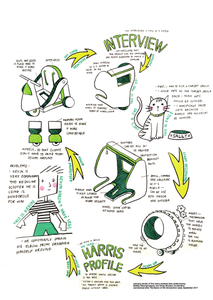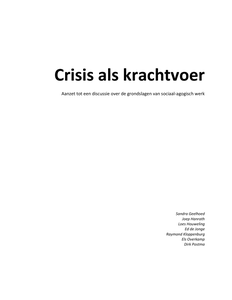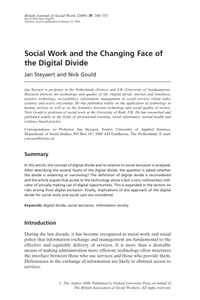Chronic itching is a serious and uncomfortable condition. The scratch response might result in a vicious cycle of alternating itching and scratching. To develop psychological interventions for people suffering from chronic itching and to break the vicious itch-scratching-itch cycle, it is important to elucidate which environmental factors trigger itch sensations. Virtual reality (VR) techniques provide a useful tool to examine specific content characteristics in a three-dimensional (3D VR) environment and their influences on itch sensations and scratching behaviour. This article describes two experiments in which we focused on the effects of environmental information on itching and scratching behaviour. Additionally, in the second experiment, we examined the influence of having a chronic skin condition on sensitivity to itch induction. We found evidence for the importance of the content of audio–visual materials for the effectiveness in inducing feelings of itch in the observers. In both experiments, we observed significantly higher levels of perceived itch in the itch-inducing conditions than in the control condition. Moreover, the results showed that elevated levels of perceived itch were associated with an increase in scratching behaviours, which was especially salient in the contagious itch condition, in which perceived itch was accompanied by a significant increase in the number of scratches. Experiment 2 additionally showed increased perceived itch levels in participants who reported having a chronic skin condition, reflecting higher sensitivity to itch-inducing audio–visual stimuli in this group than in participants without a chronic skin condition. Based on the results we concluded that directing attention towards itch- or scratch aspects of related information in the environment and to the consequences for one’s own skin are effective tools to induce itch sensations and scratching behaviour. This knowledge provides tools for developing novel strategies in advising and treating people suffering from chronic itching and breaking the vicious itch-scratching-itch cycle.
DOCUMENT

Crustumerium was an Iron Age settlement north of Rome, inhabited between 850 and 500 BC. On the basis of archaeological field surveys in the 1970’s a scenario for the development of the city and its countryside was proposed, which matches traditional models of city-state formation. However, little attention was paid to the fact that the local archaeology has been substantially disturbed by nearly a century of mechanized agricultural exploitation. A new analysis of existing and new data, in which the effects of erosion are also considered, now shows that alternative interpretations, which do not assume the maximum urbanisation of the ancient settlement area, are feasible. For the rural area directly surrounding Crustumerium, new analyses of data similarly open up new avenues of interpretation. Here, recent research indicates that a major increase of rural activity (ruralisation) can be placed in the Roman period, long after the abandonment of Crustumerium. The prevailing idea based on legacy data, however, is that intensive ruralisation already took place during the reign of Crustumerium, and that the countryside fell in disuse afterwards.This new study shows that the search for pre-Roman remains in a Roman landscape is very problematic and that new angles of interpretation are needed to review the development of the city and country of Crustumerium. By doing so, the study also questions existing ideas of the urbanisation and ruralisation of ancient city-states in a broader sense.
LINK
Industrial Design Engineering [Open] Innovation (IDE) is a 3-year, English taught, VWO entry-level, undergraduate programme at The Hague University of Applied Sciences (THUAS). The IDE curriculum focuses on the fuzzy front end of (open) innovation, sustainable development, and impact in the implementation phase of product-service design. The work field of Industrial Design Engineering and Open Innovation, like many other domains, is growing increasingly more complex (Bogers, Zobel, Afuah, Almirall, Brunswicker, Dahlander, Frederiksen, Gawer, & Gruber, 2017). Not only have the roles of designers changed considerably in the last decades, they continue to do so at increasing speed. Therefore, industrial design engineering students need different and perhaps more competencies as young professionals in order to deal with this new complexity. Moreover, in our transitional society, lifelong learning takes a central position (Reekers, 2017). Students need to give their learning path direction autonomously, in accordance with their talents and interests. IDE’s Quality & Curriculum Committee (QCC) realized in 2015 there is too much new knowledge to address in a 3-year programme. Instead, IDE students need to learn how to become temporary experts in an array of topics, depending on the characteristics of each new project they do (see Textbox 1). The QCC also concluded that more than just incremental changes to the current curriculum were needed; thus, the idea for a flexible, choice-based semester approach in the curriculum was born: ‘Curriculum M’ (Modular). A co-creational approach was applied, in which teaching staff, students, alumni, prospective students, industry (including the (international) social profit sector), and educational advisors collaborated to develop a curriculum that would allow students to become not just T-shaped (wide basis, one expertise) professionals, but U- or W-shaped professionals, with strong links to other disciplines.
DOCUMENT

In the Netherlands, an individual’s problem is not usually considered to be the community’s problem. If you are a nuisance, you are sent out of the class. If a child is awkward in its dealings with others, it is sent for training in social skills. And if youths hang around the street and people feel intimidated, the youths are removed. Police officers move them on. Civic leaders introduce bans on assembly. In other countries, too, people are usually dispersed to prevent escalation.
DOCUMENT

PURPOSE: This study investigates self-injury fromthe perspective of patients with anorexia nervosa. DESIGN AND METHODS: A phenomenological design was used. Twelve patients participated. Data were collected using a semi-structured interview guide. FINDINGS: Participants display self-injurious behavior predominantly in situations when they are forced to eat. They are terrified of gaining weight and use selfinjurious behavior to copewith their anxiety. Self-injury is envisioned as a technique to regain control of their own eating pattern without bothering anyone. They feel shame for not controlling their emotions more constructively. PRACTICE IMPLICATIONS: Healthcare professionals should systematically observe signals and explore less harmful strategies that help to regulate overwhelming feelings
DOCUMENT

Het zoeken naar gemeenschappelijke grondslagen is een hachelijke onderneming. Paradoxaal genoeg verkeert een zoektocht naar ‘wat ons bindt’ vaak in haar tegendeel; het slaan van piketpaaltjes, het markeren van grenzen, van wat ons verdeelt. Met onze aanzet tot een discussie over de grondslagen van social work richten we ons nadrukkelijk niet op de indeling van werkvelden, beroepsprofielen en opleidingsprofielen en onderwijsstructuren, maar op de vraag die daar aan voorafgaat: de vraag naar wat ons in het professionele handelen gezamenlijk uitdaagt. Antwoorden op die vraag zoeken we in de maatschappelijke transities waaraan we momenteel gezamenlijk onderworpen zijn, en waarin het lot van sociaal-agogische beroepsgroepen in sterke mate met elkaar verbonden zijn. Daarbij richten we onze blik van buiten naar binnen: welke ontwikkelingen doen zich op dit moment in de samenleving voor en wat betekenen deze ontwikkelingen voor de sociale professionals die we opleiden?
DOCUMENT

From PLoS website: In general, dietary antigens are tolerated by the gut associated immune system. Impairment of this so-called oral tolerance is a serious health risk. We have previously shown that activation of the ligand-dependent transcription factor aryl hydrocarbon receptor (AhR) by the environmental pollutant 2,3,7,8-tetrachlorodibenzo-p-dioxin (TCDD) affects both oral tolerance and food allergy. In this study, we determine whether a common plant-derived, dietary AhR-ligand modulates oral tolerance as well. We therefore fed mice with indole-3-carbinole (I3C), an AhR ligand that is abundant in cruciferous plants. We show that several I3C metabolites were detectable in the serum after feeding, including the high-affinity ligand 3,3´-diindolylmethane (DIM). I3C feeding robustly induced the AhR-target gene CYP4501A1 in the intestine; I3C feeding also induced the aldh1 gene, whose product catalyzes the formation of retinoic acid (RA), an inducer of regulatory T cells. We then measured parameters indicating oral tolerance and severity of peanut-induced food allergy. In contrast to the tolerance-breaking effect of TCDD, feeding mice with chow containing 2 g/kg I3C lowered the serum anti-ovalbumin IgG1 response in an experimental oral tolerance protocol. Moreover, I3C feeding attenuated symptoms of peanut allergy. In conclusion, the dietary compound I3C can positively influence a vital immune function of the gut.
MULTIFILE
Dit artikel gaat in op de zogenaamde digitale kloof en beschrijft hoe met de verandering van die digitale kloof ook de bijhorende sociale interventies moeten wijzigen.
DOCUMENT

Animal welfare is a multidimensional phenomenon and currently its on-farm assessment requires complex, multidimensional frameworks involving farm audits which are time-consuming, infrequent and expensive. The core principle of precision agriculture is to use sensor technologies to improve the efficiency of resource use by targeting resources to where they give a benefit. Precision livestock farming (PLF) enables farm animal management to move away from the group level to monitoring and managing individual animals. A range of precision livestock monitoring and control technologies have been developed, primarily to improve livestock production efficiency. Examples include using camera systems monitoring the movement of housed broiler chickens to detect problems with feeding systems or disease and leg-mounted accelerometers enabling the detection of the early stages of lameness in dairy cows. These systems are already improving farm animal welfare by, for example, improving the detection of health issues enabling more rapid treatment, or the detection of problems with feeding systems helping to reduce the risk of hunger. Environmental monitoring and control in buildings can improve animal comfort, and automatic milking systems facilitate animal choice and improve human-animal interactions. Although these precision livestock technologies monitor some parameters relevant to farm animal welfare (e.g. feeding, health), none of the systems yet provide the broad, multidimensional integration that is required to give a complete assessment of an animal’s welfare. However, data from PLF sensors could potentially be integrated into automated animal welfare assessment systems, although further research is needed to define and validate this approach.
DOCUMENT

Background Providing individualized care based on the context and preferences of the patient is important. Knowledge on both prognostic risk stratification and blended eHealth care in musculoskeletal conditions is increasing and seems promising. Stratification can be used to match patients to the most optimal content and intensity of treatment as well as mode of treatment delivery (i.e. face-to-face or blended with eHealth). However, research on the integration of stratified and blended eHealth care with corresponding matched treatment options for patients with neck and/or shoulder complaints is lacking. Methods This study was a mixed methods study comprising the development of matched treatment options, followed by an evaluation of the feasibility of the developed Stratified Blended Physiotherapy approach. In the first phase, three focus groups with physiotherapists and physiotherapy experts were conducted. The second phase investigated the feasibility (i.e. satisfaction, usability and experiences) of the Stratified Blended Physiotherapy approach for both physiotherapists and patients in a multicenter single-arm convergent parallel mixed methods feasibility study. Results In the first phase, matched treatment options were developed for six patient subgroups. Recommendations for content and intensity of physiotherapy were matched to the patient’s risk of persistent disabling pain (using the Keele STarT MSK Tool: low/medium/high risk). In addition, selection of mode of treatment delivery was matched to the patient’s suitability for blended care (using the Dutch Blended Physiotherapy Checklist: yes/no). A paperbased workbook and e-Exercise app modules were developed as two different mode of treatment delivery options, to support physiotherapists. Feasibility was evaluated in the second phase. Physiotherapists and patients were mildly satisfied with the new approach. Usability of the physiotherapist dashboard to set up the e-Exercise app was considered ‘OK’ by physiotherapists. Patients considered the e-Exercise app to be of ‘best imaginable’ usability. The paper-based workbook was not used. Conclusion Results of the focus groups led to the development of matched treatment options. Results of the feasibility study showed experiences with integrating stratified and blended eHealth care and have informed amendments to the Stratified Blended Physiotherapy approach for patients with neck and/or shoulder complaints ready to use within a future cluster randomized trial.
DOCUMENT
